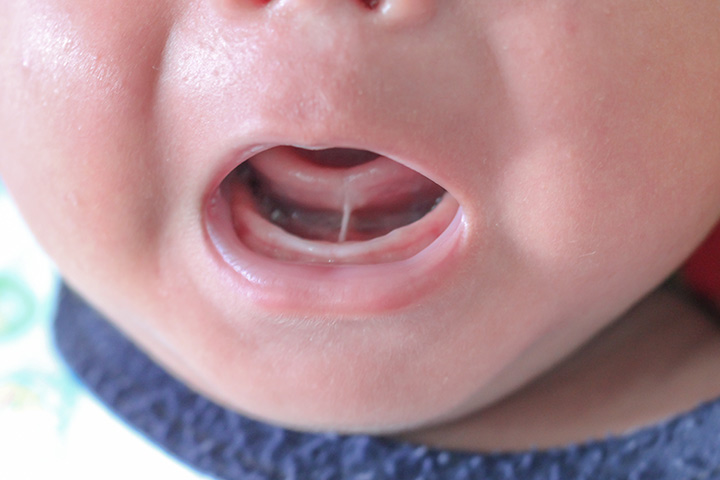Tongue tie in children-know all about the symptoms and cure
Table of Contents
Look at the mirror and raise your tongue, you would be able to see a band of tissues connecting the underside of your tongue to the floor of your mouth, this is called as Lingual frenum.
Sometimes, since birth this attachment may be unusually thick, tight, or short, called as tongue tie, restricting normal movement of the tongue. Tongue tie is a common birth defect affecting tongue. Scientifically, tongue tie is known as Ankyloglossia, originates from the Greek words “kilos” (curved) and “glossa” (tongue).
Although tongue-tie can affect anyone, it’s more common in boys than girls. Tongue-tie sometimes runs in families.
How to check if your child has a tongue tie?
Diagnosis of tongue tie is straightforward. This can be appreciated when the infant cries or tries to extend the tongue. The attachment of the frenum to the tongue should normally be approximately 1 cm from the tongue’s tip. The tip of the tongue should able to protrude outside the mouth without clefting and should be able to sweep the upper and lower lips easily, without straining. The normal range of free tongue is greater than 16 mm. The range of free motion of tongue less than 8 mm is considered severe.
In case of kids with tied tongue attachment is either short, tight or very thick. These kids are not able to take out there tongue outside completely, in an attempt to do so tongue rolls or curls up appearing arrow-shaped. In some babies, it extends to the tip of the tongue. There may be an indentation of the tip of the tongue, referred to as a heart-shaped tongue. The length of attachment of the frenum varies widely, thus symptoms too. In severe form of tongue tie, the whole tongue is attached to the floor of the mouth.
How can Tongue Tie affect a Child?
Complications associated with tongue tie depends upon the severity and may affect feeding, speech, articulation and dentition. In many children, tongue tie is asymptomatic, and the condition may resolve spontaneously, or affected children may learn to compensate adequately for their decreased lingual mobility.
- Problems with breastfeeding
Tongue tie in a newborn may result in breastfeeding difficulties. The child is not able to latch upon breast successfully, the kid may not get inadequate milk transfer. An infant with tongue-tie may experience difficulty latching on to the nipple and may compress the nipple against the gum pad instead of the tongue, resulting in nipple pain and an inefficient, inadequate seal.The severity of the symptoms due to tongue tie depends upon the height of the attachment of frenum. If the height of the freedom is at the tip of the tongue that would restrict the movement of the tongue more than the attachment of the tongue on the lower height. - Speech and articulation
Tongue tie does not prevent or delay the onset of speech but may interfere with articulation especially the sounds which are articulated with the help of tongue movement. The tongue helps in articulation by its forward or upward movement during speech. However, if the elevation of the tongue tip is restricted, the articulation of 1 or more of the tongue sounds—such as “t,” “d,” “l,” “the,” and “s”—will not be accurate. - Dental issues
Tongue plays a crucial role in normal growth and development of the oral region. Though not unanimous thinking, tongue tie can interfere with the shape of the dental arches and their consequent occlusion. Tongue tie can create a gap between the bottom two front teeth.Dental caries could occur due to food debris not being removed by the tongue’s action of sweeping the teeth and spreading of saliva. - Health issues
Improper chewing and swallowing of food could increase the gastric distress and bloat. Studies have shown that snoring and bed wetting at sleep are common among tongue-tied children. - Social issues
These kids may have the inability to lick ice cream, play a musical wind instrument, difficulty in licking the lips or in kissing, dribbling, etc. Occasionally an older child or adult will be self-conscious or embarrassed about their tongue tie that they may be teased by their classmates for their anomaly.
What to do if your child has tongue tie?
The topic of ankyloglossia is controversial, with practitioners of many specialities having widely different views regarding its significance and management. In many individuals, ankyloglossia is asymptomatic; the condition may resolve spontaneously or affected individuals may learn to compensate adequately for their decreased lingual mobility.
Some individuals, however, benefit from surgical intervention (frenotomy, frenectomy or frenuloplasty) for their tongue-tie. Frenotomy (i.e. a simple horizontal cut to release the tension of frenum ) and frenectomy (i.e. removal of frenum).
It is perhaps interesting that such a simple condition can cause such controversy and diversity of opinion. Some authors advocate surgical intervention prior to the development of speech difficulties, while others suggest withholding surgery until age four and offering surgery only to those who manifest speech problems.
However, early intervention would prevent feeding problems which lead to enhanced general health, improved the oral hygiene status, accurate articulation of words and overall personality development.
Pic Credit: MomJunction.com



